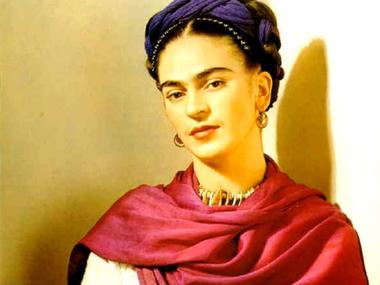
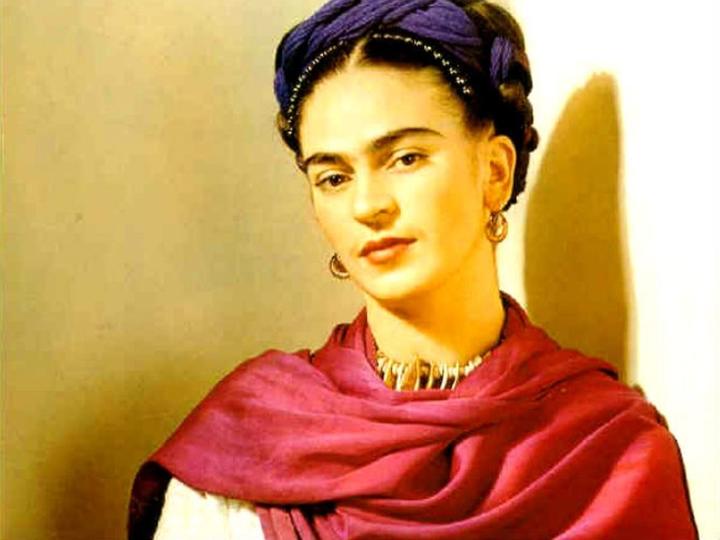
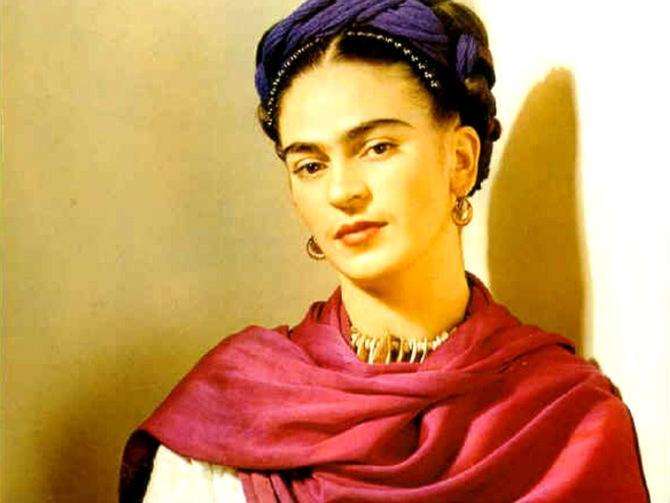
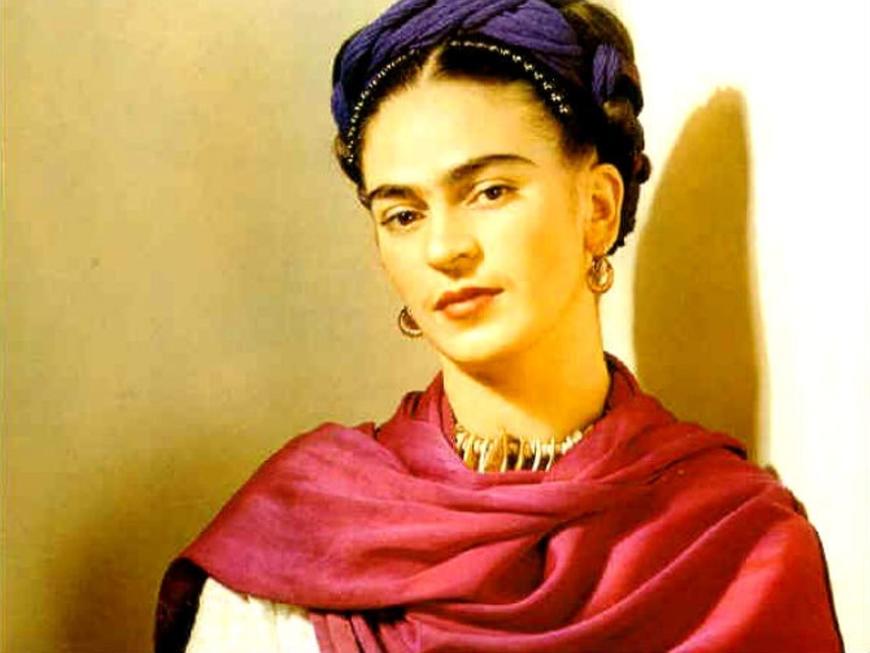
Introduction
Portrait of Lucha Maria, A Girl from Tehuacan is a painting of the Mexican artist Frida Kahlo. The world-famous artist created it in 1942. The portrait was painted using oil on a Masonite (Kahlo). Currently, the painting is in a private collection in Mexico City. Portrait of Lucha Maria is one of the few artworks of Frida Kahlo, which is not a self-portrait, and at the same time, the picture reflects the artist's deep interest and affection for the Indian national traditions, national features, and mythology of the pre-Hispanic period. This can be seen by carefully studying and analyzing the Portrait of Lucha Maria, A Girl from Tehuacan, as well as the manifestation of the commitment to the indigenous ancient cultures and national traditions of Frida in her art and life.
Body
Part 1
Frida Kahlo’s painting Portrait of Lucha Maria, a Girl from Tehuacan is painted with oil on a mason and its dimensions 21½ x 17 (Kahlo). This artwork shows a girl sitting on a rock in the middle of the desert. Behind her, the viewer can see two ziggurats, and above them, two heavenly bodies are painted in the sky. The girl is dressed in a dress and something resembling a poncho or a shawl, traditional apparel of the Indians of Central and South America (Kahlo). The girl is alone in the desert, but her face is calm and peaceful. She holds a small, veiled plane in her hands.
This painting of Frida Kahlo is full of contrasts that are expressed in various ways. Firstly, the light-shadow relations in the picture with a vertical line divide it into two parts of the ravine, in the middle of which the girl sits. The right part of the image is illuminated and painted with more vivid colors; this applies both to the desert and to the sky with white clouds, symbolizing daytime (Kahlo). At the same time, the left side of the picture is in shadow, and the clouds in the sky are no longer white but gray with black patches. One can assume that each half of the sky symbolizes day and night. Such a light-shadow contrast creates a tense atmosphere and sharply distinguishes a girl sitting in the foreground.
Secondly, the picture is divided horizontally into warm and cold parts. Sand in the desert is painted with orange colors, while the sky is painted blue with light and dark shades. Thus, cold shades are poured warm, but it should be noted that in the sky, among the blue color, two warm celestial bodies, probably the Sun and the Moon, stand out with a sharp nuance (Kahlo). Frida did not try to realistically convey the texture of the desert land, or with aerial perspective to show the distance to the ziggurats, because this picture is most valuable because of its symbolism, and not the technique of execution. Nevertheless, the texture of the girl's white dress is conveyed realistically thanks to folds and the use of halftones (Kahlo). Thus, the impression is either of dust and soiled dress, or translucency, which is most noticeable on the hip of the girl.
A clear geometric pattern put on the shawl contrasts with the flowing lines of the dress and the figure of the girl (Kahlo). The image of the radical girl is amazing with its accuracy, literally with the jeweler's elaboration of details, as her fingers and toes, facial features and folds of clothing are delicately and realistically drawn. In addition, triangular ziggurats contrast with the circular celestial bodies above them (Kahlo). Thus, one can conclude that the author, choosing the means of expressiveness and conveying the idea for her work, used not only the symbolism of individual objects but also sharp contrasts, which are expressed in light shadows, color shades, shapes, and lines.
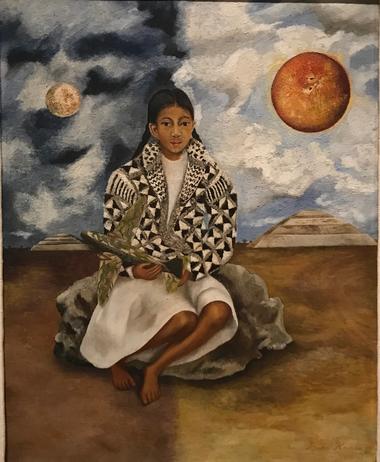
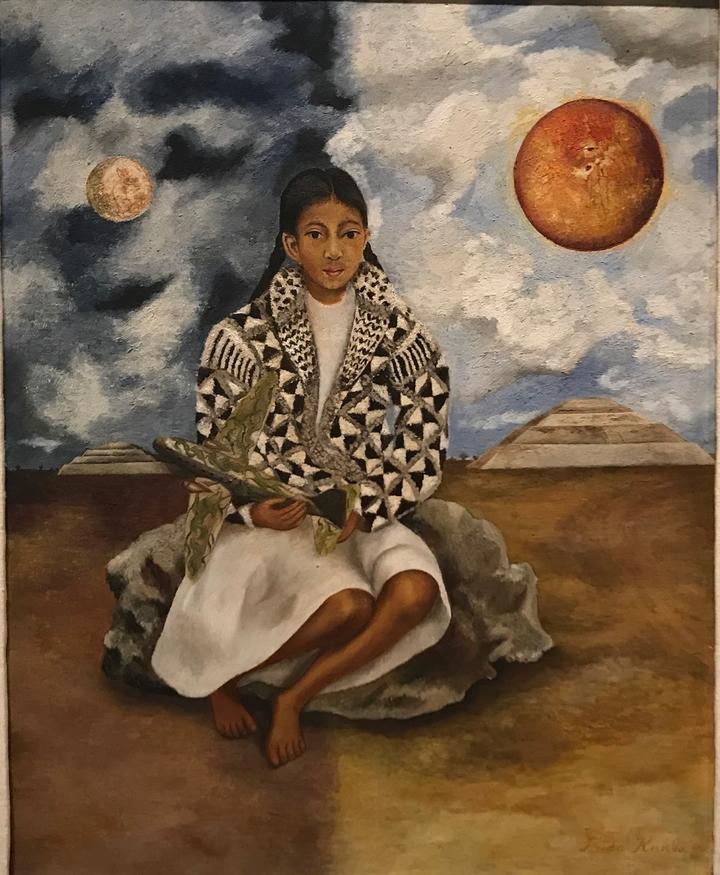
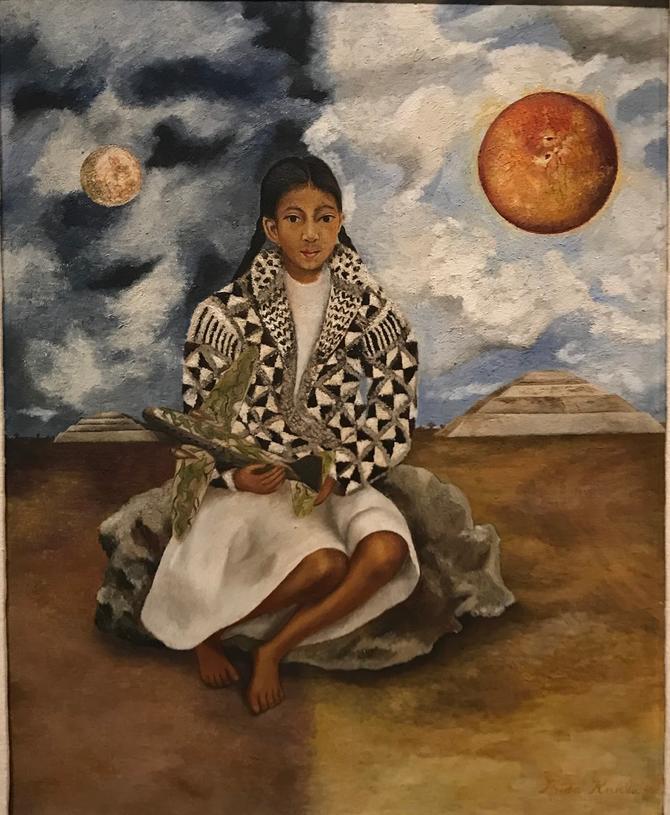
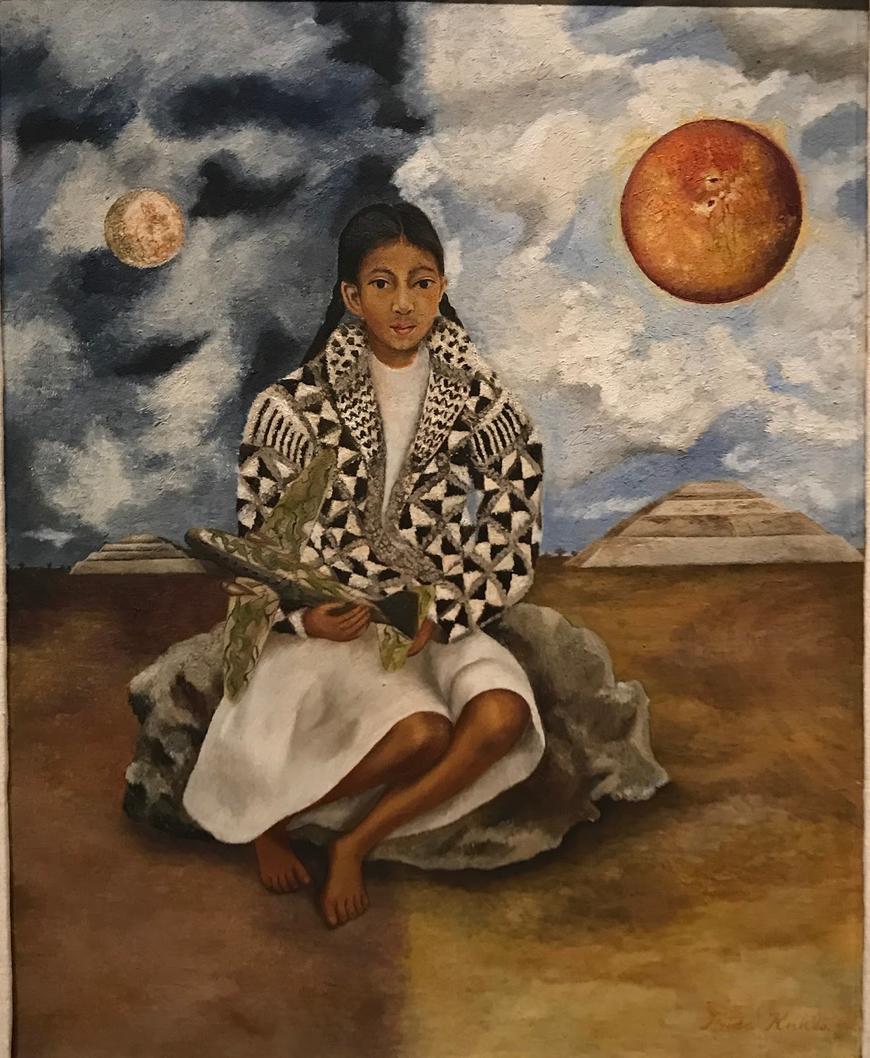
Attached file: Portrait of Lucha Maria, A Girl from Tehuacan .docx
Click download to get access to a full version of the paper
Part 2
The creativity of Kahlo is a diary where the artist, without any embarrassment, practically turns the soul inside out. Her works should be viewed as a metaphorical abstract of concrete experiences. Thus, the Portrait of Lucha Maria can be seen as a manifestation of interest in the culture of the artist. Here, more than self-portraits, where Frida expressed her own feelings and feelings, she conveys her thoughts about the world around her, about the meaning of mythology and culture for her. She draws techniques from the Mexican folk art and the artist's paintings often talk about her adherence to traditions and the connection with other cultures. Attention to the traditional culture, in general, not a stranger to Frida, as her mother was of Indian blood, reflected not only in her works but also in her manner of dressing (Souter 11). On her self-portraits, she often appears in a tehuacan suit, that is, a resident of the region of Tehuantepec, inhabited by Indians. Given these facts, the portrait in which Frida portrayed an indigenous girl in the background of the pyramids in Teotihuacan seems logical and expresses the characteristic features inherent in the art of the artist.
In addition, knowing some of the nuances of her biography, one can better understand why Frida accentuates her work not on her self-portraits, but on such a cultural image in 1942. In 1929, Frida Kahlo married a man of her life, a Mexican communist and artist Diego Rivera (Souter 53). The communist Rivera is invited to work in the US, and Frida leaves Mexico along with him. Several years spent in a capitalist country strengthened her enthusiasm for communism (Souter 57). However, one can assume that this move made her feel a lack of her culture and turn to her in her artworks.
Perhaps during this period, Frida is immersed in the national culture even more and if she used to write in a manner close to the Mexico people's art, then living abroad, in contrast, brought her even closer to national traditions. On her self-portraits, Frida is always depicted among exotic flowers and animals, in the riot of colors of nature and enchanting outfits in the spirit of folk costumes of Mexico (Souter 154, 205). In the works, Kahlo often used folklore and natural motifs, as well as elements of magical realism. Thus, the image of the indigenous girl in the Mexican desert against the backdrop of the Pyramid of the Moon and the Pyramid of the Sun in Teotihuacan is imbued with national and cultural motifs.
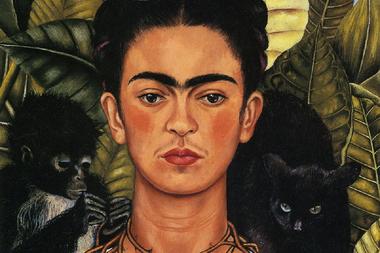
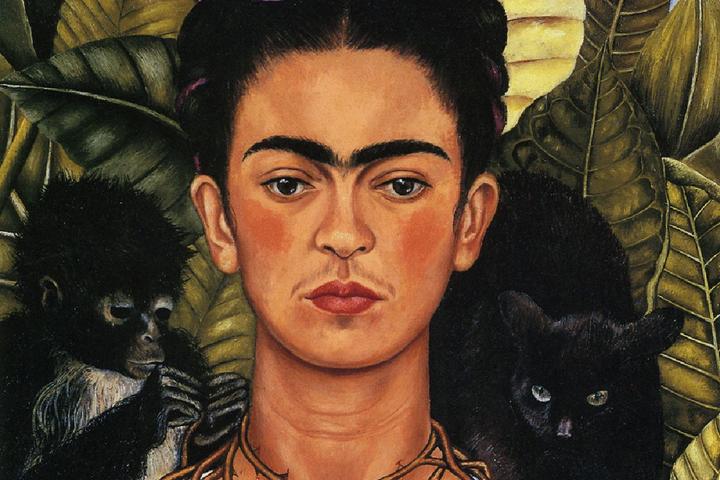
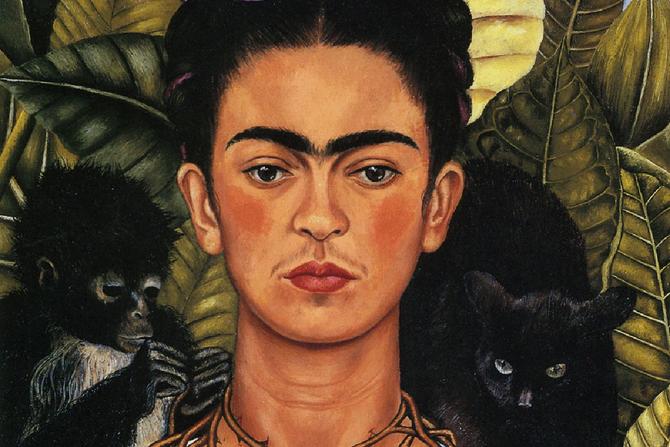
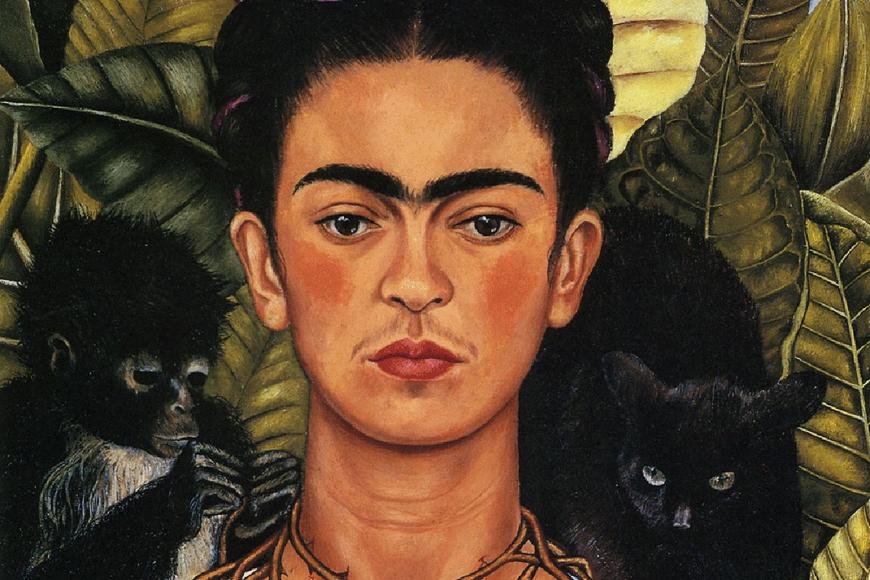
Thus, the national motives have a special significance in the work of Frida Kahlo. Frida Kahlo knew the history of her homeland well. Frida was especially fond of people's Mexican culture, she collected ancient works of applied art and even in everyday life, and she wore national costumes. The great influence of Mexican art and traditions and the culture of pre-Columbian civilizations are felt in the paintings of Frida. Her work is saturated with symbols and fetishes, in particular, the Portrait of Lucha Maria, a Girl from Tehuacan, is an example of Frida's work impregnated with her craving for indigenous culture. Lucha Maria is depicted against the background of the Moon on one side and the Sun on the other. One can notice two pyramids under the lights, which are located far from the girl, almost on the horizon, somewhere in the middle of the desert.
Turning to these symbols and analyzing their meanings, one can come to the conclusion that here the artist makes reference to the ancient legend of the Indians. Thus, the ancient Aztec myth has many interpretations, but the main significance of the legend is that once the whole world was plunged into darkness and the sacred fire continued to burn only in Teotihuacan (Deffebah 91). The gods, seeing this, gathered in Teotihuacan to resume the movement of the Sun and the Moon and return the light to Earth. One of the variants of the legend tells how the god of the wind from the legends managed to blow off the Sun and the Moon and the order returned to the world (Deffebach 92). Therefore, the pyramids of the Sun and the Moon in Teotihuacan were erected as a reminder of how time stopped, and then again continued its journey.
Therefore, Frida portrays this majestic symbol of the Indians in the Portrait of Lucha Maria. It has the Moon right above the smaller pyramid on the left, while the Sun is directly above the larger pyramid on the right side (Kahlo). This moment symbolizes the joint appearance of the two most important heavenly bodies together, facing each other, the moment of the end and the beginning of time, which occupies a major place in the culture of indigenous peoples. A girl can symbolize the Indians, her people, she is alone in the desert against the backdrop of the pyramids, but she does not look scared, rather pacified (Kahlo).
One can assume that the girl has the wisdom of her people and knows that the gods have led into the movement of the stars and the Sun and the Moon have come together to give the Indians tribute and the movement has continued its course. The artist attached great importance to the Aztec symbol of the eternal struggle of the sun and the moon, since she repeatedly used the image of this legend in her works, for example, in Self-Portrait Along the Border of Mexico and the United States. However, the Portrait of Lucha Maria represents the most obvious pyramid of the Sun and the Pyramid of the Moon (Souter 91). Thus, the image of an unknown Indian girl, not herself in her image, the use of traditional clothing elements and mythological symbols, which are essential elements of the indigenous culture of Mexico and the Aztec traditions and beliefs, reflect the deep interest and commitment of Frida Kahlo to the history and culture of the Indians, her communal knowledge of the legends and traditions of the indigenous people and, obviously, the feeling of her personal involvement in this ancient civilization.
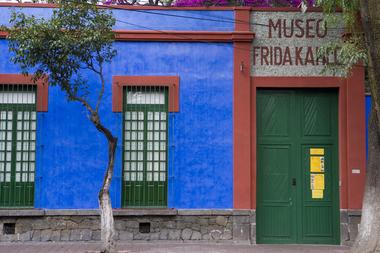
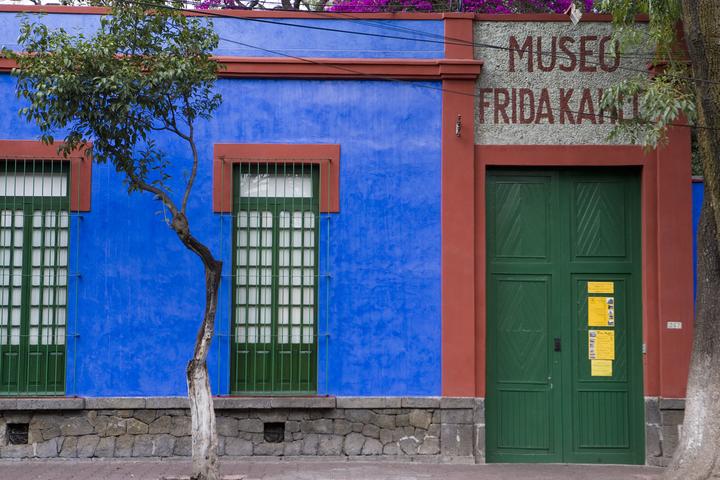
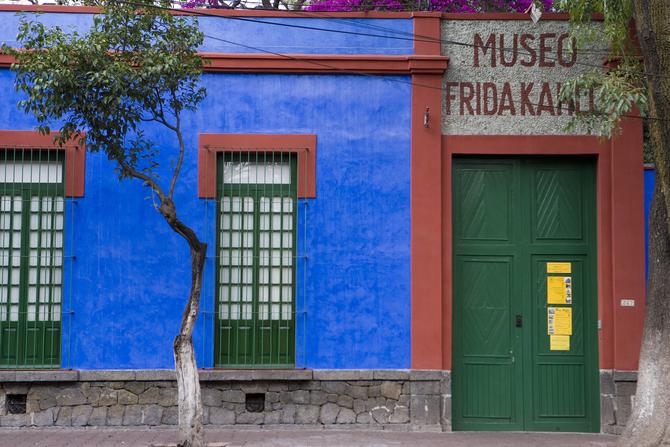
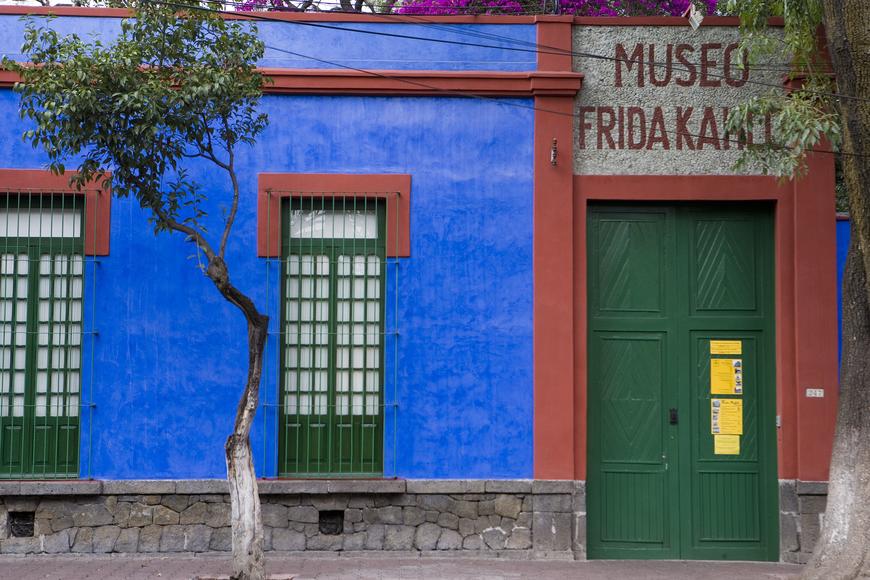
However, one must pay attention to one more detail of the portrait - the plane in the hands of the girl. The plane is disguised and depicted with plant patterns, which makes it less obvious in the painting (Kahlo). However, given that all the details of Frida Kahlo's works are symbolic, the question of why she portrayed the plane remains unclear. On the one hand, while portraying an Indian girl, Frida could thereby depict her people and her knowledge of the culture. Thus, the girl should be modern to Frida, but she should continue to feel a connection with the indigenous peoples. In this case, the appearance of a toy airplane in the hands of a girl becomes understandable; it symbolizes a modern subject, connecting the present Kahlo and her indigenous roots.
Nevertheless, the aircraft can be viewed from yet another, completely different point of view. Being an all-around developed personality, Frida Kahlo was interested in politics and as mentioned above, she was deeply imbued with the ideas of communism. Therefore, everything that is happening in the world in the pre-war of the Second World War could not but excite the educated artist. Proceeding from this, one can make the assumption that the plane in the hands of the indigenous girl is a symbol of the coming changes and the onset of war and the struggle for freedom. It is possible to assume that her art in this picture creates a powerful symbol of the history, traditions, and mythology of the Indians, personal experiences and the artist's commitment to the Aztec roots and perhaps even politics. Her picture combines the acute sociality, personal thoughts of Frida and the deep antiquity of Mexican land and culture.
Conclusion
Frida Kahlo is one of the most vivid and original artists of the 20th century. Her life was as stormy as the colors of her canvases. She protested against the foundations, against the conventional view of things and even against her own body, suffering throughout her life from various physical ailments. Kahlo was not a professional artist, but her style of naive art (primitivism); most often embodied in self-portraits, became known throughout the world and received many imitators. No theme was taboo for Kahlo, infertility, abortion, illness, sexuality, and sorrow, ups and downs and all life were in her paintings. However, the Portrait of Lucha Maria stands out among the usual self-portraits of Frida and raises one more important theme for the artist - the theme of her culture, traditions, and legends. The ideas of her paintings are ciphered in detail, background, figures, and symbols of the Portrait of Lucha Maria, A Girl from Tehuacan reveals herself through national traditions and is closely connected with the Indian mythology and culture of the pre-Hispanic period, which was an important part of Frida Kahlo's work and her life in general.
Have your paper written from scratch with Writing Endeavour and be sure to receive a high grade!